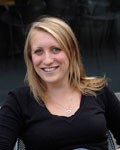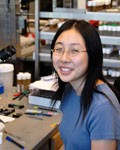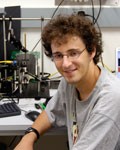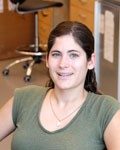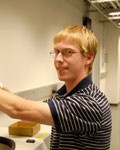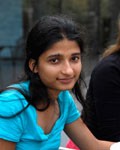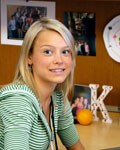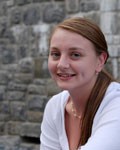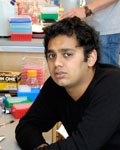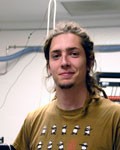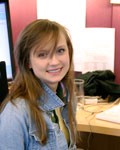 |
|
Olga Botvinnik
Massachusetts Institute of Technology
Major: Mathematics and Biological Engineering
Janelia Mentor: Sean Eddy
Botvinnik built a computer algorithm that analyzes protein databases to better define what makes proteins unique.
|
| |
|
|
|
|
|
Jennifer Brown
Oxford University
Major: Physiological Sciences
Janelia Mentor: Joshua Dudman
Brown analyzed a "caged" version of dopamine that is released when exposed to a specific wavelength of light, to better understand how dopamine reinforces particular behaviors in mice.
|
| |
|
|
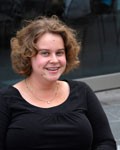 |
|
Kelli Carroll
Davidson College
Major: Biology
Janelia Mentor: Rex Kerr
Carroll examined the role of calcium channels in the link between C. elegans' physical and neurological responses to vibrations, which cause the worms to reflexively move backwards.
|
| |
|
|
|
|
|
Mei-Hsin Cheng
Massachusetts Institute of Technology
Major: Biology
Janelia Mentor: Julie Simpson
Cheng screened several fruit fly lines to identify the neurons involved when the flies use their long nose extensions to eat solutions containing sugar, which may help explain more about fly behavior.
|
| |
|
|
|
|
|
Philip Coen
Cambridge University
Major: Neuroscience/Physics
Janelia Mentor: Vivek Jayaraman
Coen tested whether the behavior of tethered fruit flies is changed when they are exposed to different visual stimuli while walking on a ball, which may help explain fly movement.
|
| |
|
|
|
|
|
Beryl Jones
University of Arizona
Major: Biochemistry, Molecular & Cellular Biology
Janelia Mentor: Lynn Riddiford
Jones looked at the role of a hormone receptor in influencing the size and eating behavior of fruit fly larvae.
|
| |
|
|
|
|
|
Kristopher Kennedy
University of California, Los Angeles
Major: Neuroscience
Janelia Mentor: Michael Reiser
Kennedy studied how fruit flies detect environmental differences, specifically velocity changes, in their immediate area and the minimum difference the flies can detect, which may help explain how flies move.
|
| |
|
|
|
|
|
Taylor LaFlam
Yale University
Major: Biology
Janelia Mentor: David Clayton
LaFlam examined the grouping of mitochondrial DNA in clumps called nucleoids and the role of the protein EF-Tu in these nucleoids, which will help explain the mechanisms of change in the mitochondrial genome.
|
| |
|
|
|
|
|
Nirmala Paudel
University of Oxford
Major: Biomedical and Information Engineering
Janelia Mentor: Roian Egnor
Paudel recorded mouse vocalizations in different social contexts to find out if there are differences in call rate, duration, and complexity, which may help explain mouse communication.
|
| |
|
|
|
|
|
Kiersten Petersen
Georgia Institute of Technology
Major: Biomedical Engineering
Janelia Mentor: Alla Karpova
Petersen researched RNA expression in different regions of the mouse brain to determine what genes are expressed at high levels in different regions of the brain.
|
| |
|
|
|
|
|
Maria Purice
University of Oregon
Major: Biology, Neuroscience focus
Janelia Mentor: Gerry Rubin
Purice studied gene expression in the brains of fruit fly embryos and integrated the results into a larger 3-D map of the fruit fly brain.
|
| |
|
|
|
|
|
Balaji Ravichandran
University of Cambridge
Major: Physics/Neuroscience
Janelia Mentor: Loren Looger
Ravichandran helped to identify an enzyme that may be able to open up a "genetic cage," which would allow it to be expressed only in selected areas of the nervous system.
|
| |
|
|
|
|
|
Dylan Rich
University College London
Major: Neuroscience
Janelia Mentor: Dmitry Rinberg
Rich tested whether it is possible to measure the brain's response to smell in a live mouse.
|
| |
|
|
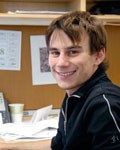 |
|
Nicholas Sofroniew
University of Cambridge
Major: Mathematics
Janelia Mentor: Dmitri Chklovskii
Sofroniew worked to develop better ways to detect mitochondria and recreate their position in neurons on electron microscope scans of rat brains.
|




